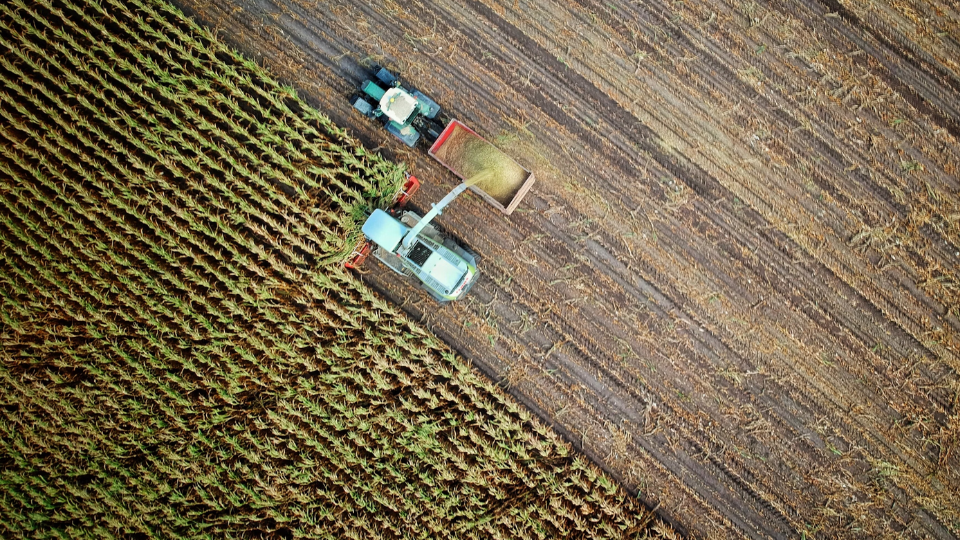Introduction
In this article we will try to analyze, in a generic way, the main trends of 2024 related to the agricultural sector, which is undergoing a series of changes, driven by technological innovation and a growing commitment to sustainability.
The main trends we can divide them into four macro-categories:
- Agriculture 4.0 and Smart Farming;
- Organic Farming;
- Digitization and data integration platforms;
- Sustainability and environmental impact reduction.
Of course, these trends are complemented by other important phenomena such as, agricultural robotics, regenerative agriculture and food traceability.
Agricolture 4.0 and Smart Farming
The agricultural sector faces, on the one hand, the challenges of climate change, characterized by below-average spring temperatures, numerous heat waves and floods, and on the other hand, the opportunities presented by technological innovation that make agriculture more efficient and sustainable. In fact, precision irrigation solutions or decision support systems allow us to optimize crop water needs on the one hand, and on the other allow us, for example, to reduce fertilizer use.
In Italy, the Agriculture 4.0 market has reached a value of 2.5 billion euros, with a growth rate of +20 percent over the previous year. In addition, the market is going through a period of transformation, as although the main revenues come from the sale of connected farm machinery and monitoring and control systems, lately the focus is falling on software solutions necessaire for hardware integration. The fact that farmers understand the importance and value of data is a very important aspect.
The percentage of farms using Agriculture 4.0 solutions has remained almost unchanged since 2023 (72 percent, a +1 percent), while the use of software solutions within farms has increased slightly (3.4 percent compared to 3.2 percent in 2023). Among the most widely adopted solutions we have management software and machine monitoring and control systems.
Within Agriculture 4.0, another sector is developing: SMART FARMING, i.e., solutions that include the use of big data, artificial intelligence, drones and IoT sensors, to optimize and make crops more efficient, but at the same time reduce waste and improve productivity.
Obviously, as a new industry, it will face a number of challenges, first and foremost cost, as the systems adopted are expensive both to produce but also to maintain, as they include the use of advanced components, such as sensors.
Other challenges also include accessibility, as most of the time the land is located in remote areas not covered by internet access, but still by the difficulty of keeping the systems constantly updated or cybersecurity, as software and hardware are involved in the management of the smart farm, there is an increased risk of intrusion by hackers or computer viruses.
Organic farming
While between 2022 and 2023 Italians faced a series of food increases that inevitably led to reduced household purchasing power, in 2024 Italians’ spending intentions on household food consumption seem to be improving. Not only will there be an emphasis on convenience, but there will also be a focus on the products being purchased, which should be healthy, traditional, and environmentally friendly. Sustainability and concern for the environment are two key determinants of purchasing.
In 2024, the organic market increased in terms of both cultivated area and consumption. Italy, with more than 2million hectares under cultivation is confirmed as the leader in the organic sector and also has the highest percentage of organic areas in the total of 19%, compared to 11% in Germany and Spain, and 10% in France, and holds the record in the EU for the number of organic producers.
Digitization and data integration platforms
Digitization in the agricultural sector is a key aspect, as these solutions allow farmers to collect and analyze data from different sources, which in turn allows farmers to make more informed decisions, thus reducing risks related perhaps to external factors.
The use of digital solutions on farms allows for greater efficiency in process management, as through them it will be possible to improve quality. As already mentioned, being able to collect and analyze data ensures increased efficiency and productivity. Being able to increase productivity is essential to meet the needs of an ever-growing world population.
Sustainability and reduction of environmental impact
In addition to the growth of organic farming, which we saw earlier, there is also another very important aspect, which is the adoption of agricultural practices that reduce pesticide use, promote biodiversity, and reduce Co2 emissions.
Using sustainable practices in agriculture are essential to address global challenges related to climate change, food security or natural resource conservation. In addition, according to the GreenItaly 2023 Report, sustainability not only represents a cost, but also an opportunity to innovate and confirms that about 40.9 percent of agricultural enterprises invest in eco-innovations.
Conclusions
The year 2024 marks a crucial phase for agriculture, characterized by the massive adoption of digital technologies and a growing focus on sustainability. Agriculture 4.0, with the use of drones, big data and IoT sensors, is revolutionizing crop management, increasing productivity and reducing waste. In parallel, organic farming continues to gain ground, reflecting a growing demand for greener practices and healthier products. Digitization and data integration are also improving the operational efficiency of farms, while a focus on environmental sustainability is driving the industry’s evolution toward a more resilient and responsible model.
Sources:
https://www.agendadigitale.eu/industry-4-0/agricoltura-4-0-in-italia-a-che-punto-siamo/#_ftn1
https://www.istat.it/comunicato-stampa/stima-preliminare-dei-conti-economici-dellagricoltura-anno-2023/
https://www.servizi40.it/digitalizzazione-settore-agricolo/

